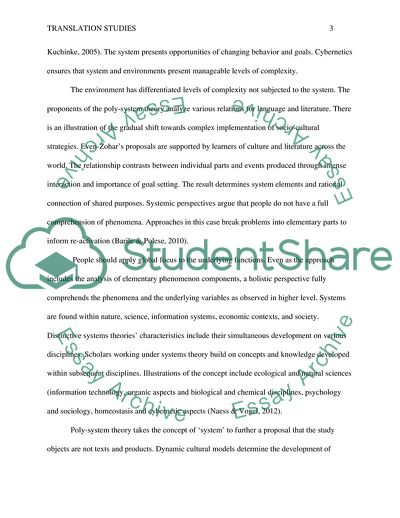Cite this document
(Theoretical Essay on Translation Studies Example | Topics and Well Written Essays - 1250 words, n.d.)
Theoretical Essay on Translation Studies Example | Topics and Well Written Essays - 1250 words. https://studentshare.org/english/1841136-theoretical-essay-on-translation-studies
Theoretical Essay on Translation Studies Example | Topics and Well Written Essays - 1250 words. https://studentshare.org/english/1841136-theoretical-essay-on-translation-studies
(Theoretical Essay on Translation Studies Example | Topics and Well Written Essays - 1250 Words)
Theoretical Essay on Translation Studies Example | Topics and Well Written Essays - 1250 Words. https://studentshare.org/english/1841136-theoretical-essay-on-translation-studies.
Theoretical Essay on Translation Studies Example | Topics and Well Written Essays - 1250 Words. https://studentshare.org/english/1841136-theoretical-essay-on-translation-studies.
“Theoretical Essay on Translation Studies Example | Topics and Well Written Essays - 1250 Words”. https://studentshare.org/english/1841136-theoretical-essay-on-translation-studies.


